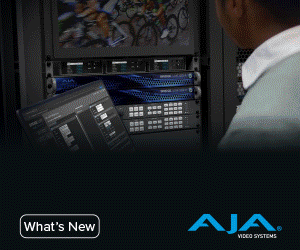Corporate environments are undergoing a significant transformation driven by cutting-edge audiovisual (AV) integration technologies. These innovations are enhancing communication and collaboration, ultimately boosting productivity and efficiency in business operations. Here’s a look at the latest trends in AV integration that IT managers and AV professionals need to know to stay ahead.
1. Embracing Unified Communication Platforms
Unified communication platforms are at the forefront of AV integration, enabling teams to collaborate seamlessly across various devices and locations. Technologies such as Microsoft Teams, Zoom, and Cisco Webex are increasingly being integrated into corporate AV setups, allowing for video conferencing, screen sharing, and real-time communication. These platforms not only enhance meeting experiences but also ensure team members stay connected, whether they’re in the office or working remotely. For IT managers, deploying unified communication tools can streamline operations and improve organizational cohesion.
2. Smart Meeting Rooms Powered by IoT
The Internet of Things (IoT) is revolutionizing traditional meeting rooms, transforming them into smart spaces that automate various aspects of AV management. From intelligent lighting and automated blinds to voice-controlled presentations and sensor-based climate control, IoT-enabled rooms are designed for maximal comfort and efficiency. Companies are integrating IoT devices within their AV systems to create environments that automatically adjust to user needs, resulting in improved meeting quality and energy savings. AV professionals are increasingly tasked with implementing these technologies to enhance user experience and optimize resource usage.
3. Advanced Display Technologies
The evolution of display technologies is a game-changer in AV integration, with advancements such as 4K and even 8K displays becoming standard in corporate settings. These high-resolution displays provide ultra-clear images, which are crucial for detailed data visualization and impactful presentations. Beyond resolution, businesses are exploring interactive display technologies like touch screens and digital whiteboards, which encourage collaboration and innovation during meetings. For IT managers, selecting the right display technology involves balancing budget considerations with the needs for clarity and interactivity.
4. Cloud-Based AV Solutions
As businesses continue to adapt to remote working and decentralized teams, cloud-based AV solutions are gaining traction. These solutions offer flexibility, scalability, and cost-effectiveness unparalleled by traditional AV infrastructures. By moving AV operations to the cloud, companies can ensure seamless updates, simplify management, and facilitate global collaboration. IT managers and AV professionals are leveraging cloud platforms to deploy and manage AV services efficiently, providing a future-proof approach to corporate audiovisual needs.
5. Integrating Advanced Audio Systems
Audio quality is as crucial as visual clarity in AV integration, and advanced audio systems are transforming how businesses experience sound. Innovations such as beamforming microphones, noise reduction technologies, and spatial audio are being integrated to ensure clear and natural communication. These systems are particularly beneficial in large conference rooms or open-plan offices where ambient noise can be distracting. For IT professionals, selecting the right audio technologies is essential to maintain communication quality and enhance overall user experience.
In conclusion, the landscape of AV integration in corporate environments is rapidly evolving, presenting exciting opportunities for IT managers and AV professionals. By staying informed about these trends and implementing the latest technologies, businesses can create dynamic and efficient spaces that foster collaboration and innovation. As we continue to advance, the role of AV technology in transforming corporate spaces will only become more integral, driving the way we work and communicate forward.
- Transforming Workspaces: The Future of AV Integration - February 19, 2025
- Transforming Remote Work: How AV Technology is Paving the Way - February 18, 2025
- Revolutionizing AV Integration: Embrace the Cloud - February 17, 2025








